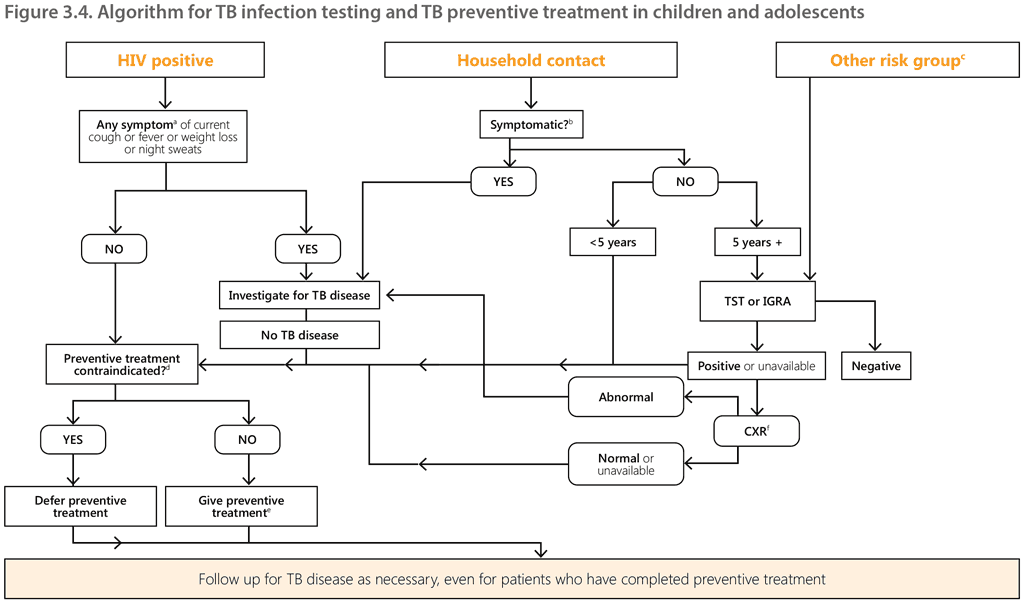Перекрёстные ссылки книги для 3.3.3.3. Children and adolescents living with HIV
Children and adolescents living with HIV should be screened for TB disease at every visit to a health facility or interaction with a health worker, using standard screening questions, as part of routine clinical care (see Chapter 2). Those who do not have any of the symptoms in the questionnaire are unlikely to have TB disease and should be offered TPT, regardless of their ART status. CXR may be offered to adolescents living with HIV and on ART; if there are no abnormal radiographic findings, they may be given TPT. Lack of availability of CXR should not pose a barrier to providing TPT to adolescents living with HIV.
TB infection testing is not a requirement for initiating TPT but may be used where available to determine TPT eligibility in adolescents living with HIV. Infants aged under 12 months who are living with HIV and who do not have TB symptoms should be given TPT only if they have a history of contact with a person with TB, and TB disease has been excluded. Infants, children and adolescents living with HIV who report any of the symptoms listed may have TB disease and should be evaluated for TB and other diseases (see Chapter 4). If TB disease is excluded after an appropriate clinical evaluation or according to national guidelines, TPT should be offered.
The treatment decision algorithms described in Chapter 4 are distinct from the algorithm for TB infection testing and TPT in Figure 3.4, as treatment decision algorithms are used in children identified as having presumptive TB.

a If aged under 10 years, any one of current cough, fever, history of contact with TB, reported or confirmed weight loss of more than 5% since last visit, growth curve flattening, or weight-for-age below −2 Z-scores. Asymptomatic infants aged under 1 year living with HIV are treated for TB infection only if they are household contacts of a person with TB. TST or IGRA may identify people living with HIV who will benefit most from TPT. CXR may be used in people living with HIV on antiretroviral therapy before starting TPT.
b Any one of cough, fever, night sweats, haemoptysis, weight loss, chest pain, shortness of breath or fatigue. Children aged under 5 years should also be free of anorexia, failure to thrive, not eating well, and decreased activity or playfulness to be considered asymptomatic.
c Including silicosis, dialysis, anti-tumour necrosis factor treatment, preparation for transplantation and other risks in national guidelines. People in this category should also have TB disease ruled out if they have suggestive clinical manifestations.
d Including acute or chronic hepatitis, peripheral neuropathy (if isoniazid is used) and regular heavy alcohol consumption. Pregnancy and previous history of TB are not contraindications.
e Regimen chosen based on considerations of age, strain (drug-susceptible or otherwise), risk of toxicity, availability and preferences.
f CXR may have been carried out earlier as part of intensified case-finding.
 Обратная связь
Обратная связь